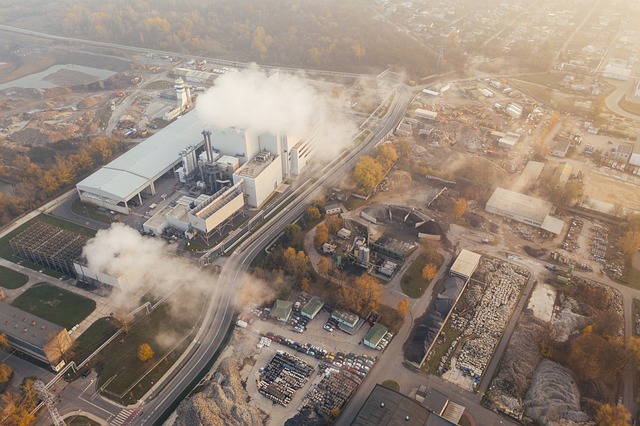Vietnam is cutting carbon emissions. It aims to meet climate goals by 2030. The carbon market is key. Companies trade credits to offset emissions.
Carbon Market Initiatives
Hue City has LED lights. They cut costs and reduce emissions. In Northern Vietnam, the World Bank funds forests. The project costs $51.5 million.
Vietnam plans a carbon market by 2028. Pilot programs begin in 2026. Decree No. 06/2022/ND-CP supports this shift. Challenges include delays and corruption.
Understanding Carbon Markets
A carbon market lets companies trade carbon credits. It creates financial incentives for emission cuts. This makes businesses invest in cleaner tech.
A carbon credit equals one metric ton of CO2 removed. Credits come from reforestation, renewables, and industry changes. Companies sell surplus credits.
Types of Carbon Markets
There are compliance and voluntary markets. Compliance markets are government-regulated. The EU ETS and China’s system are examples.
Vietnam’s compliance market launches in 2028. High-emission industries must buy credits. Voluntary markets let companies offset emissions by choice.
Bamboo Capital’s Bamboo Eco sells credits from eco-projects. Carbon credit trading works through caps, purchases, projects, verification, and trading.
Vietnam’s Carbon Market Roadmap
Vietnam’s carbon market aims to attract investment. It can also avoid carbon taxes. Other countries already run structured carbon markets.
Vietnam’s roadmap includes key milestones. Decree No. 06/2022/ND-CP sets the foundation. A trading pilot launches in 2024. The credit registry begins in 2025.
In 2026, pilot programs start in key sectors. By 2027, regulations expand. Vietnam’s full market launch is set for 2028.
Projected Market Impact
Carbon pricing may start at $5-$15 per ton. The market could generate $1 billion yearly. Emission reductions could hit 27% by 2030.
By mid-2024, 40% of the exchange system is done. Beta testing is ongoing. Companies need to prepare for carbon pricing impacts.
Key Players in Vietnam’s Carbon Market
Government agencies shape Vietnam’s carbon market. MONRE oversees policies. MARD manages forest-based carbon credits.
Private companies play a role. CT Group is building a trading platform. Bamboo Eco focuses on reforestation. Mekong Economics supports market research.
International Support and Challenges
International organizations support Vietnam. The World Bank funds forestry projects. The ADB helps create a carbon registry. UNDP aids policy design.
Vietnam’s market faces hurdles. Regulatory gaps cause delays. Overlapping roles slow implementation. Businesses need clear policies.
Transparency and Risks
Transparency is a concern. Risks include credit fraud and weak reporting. Digital tracking can help. Third-party verification is crucial.
Many companies lack awareness. Only 35% of businesses are prepared. Training and education programs are needed.
Financial Barriers and Green Finance
Carbon projects need money. Small businesses struggle with costs. Green finance and incentives can help. Government-backed loans may ease the burden.
Vietnam must integrate with global markets. The EU’s carbon tax starts in 2026. Vietnam risks losing trade advantages without alignment.
Solutions to Overcome Barriers
To overcome barriers, Vietnam should simplify governance. Blockchain registries boost transparency. Financial support helps businesses adapt.
Early action ensures Vietnam’s success. The country can lead in carbon trading. This attracts investors and strengthens the green economy.
Investment Opportunities in Vietnam’s Carbon Market
Vietnam’s carbon market offers investment opportunities. It could generate $1 billion by 2030. Companies can trade credits and reduce costs.
Vietnam wants 45% renewable energy by 2050. Solar, wind, and hydro investments are growing. Government incentives support clean energy projects.
Agriculture and forestry create carbon credits. The Mekong Delta has low-emission rice projects. Bamboo Eco works on reforestation efforts.
Industrial Decarbonization and Finance
Industrial decarbonization is crucial. High-emission industries must adapt. VinFast and PetroVietnam have started reducing emissions.
International investors are involved. The World Bank and ADB provide funding. Green bonds and loans are growing in Vietnam’s market.
Global Integration and Future Prospects
Vietnam may link with China’s carbon market. The Asian Carbon Exchange is an option. Global integration increases trading opportunities.
Businesses must act now. Early adopters gain advantages. Financial incentives are available. Sustainable operations ensure long-term success.
Compliance and Regulatory Frameworks
Vietnam’s carbon market is growing. Decree No. 06/2022/ND-CP sets rules. Pilot trading starts in 2026. The full market launches in 2028.
High-emission industries must prepare. Carbon pricing will affect costs. Early compliance is key to avoiding penalties.
Risks and Challenges
Carbon markets face risks. Prices change based on demand. Policy changes create uncertainty. Global market integration remains complex.
Companies must audit their carbon footprint. Decarbonization plans are necessary. Partnering with carbon credit platforms can provide advantages.
Green Finance and Investment Strategies
Green finance options are available. Government-backed loans support projects. Businesses should monitor regulatory updates for opportunities.
Vietnam aims to be a regional carbon hub. New incentives will encourage green investments. Carbon pricing may match global standards by 2035.
Final Takeaway
Early market participants gain financial and regulatory benefits. Sustainability is key. Vietnam’s carbon market offers long-term rewards.
Businesses must engage with Vietnam’s carbon market. Compliance will be mandatory. Voluntary markets also provide investment opportunities.
Vietnam’s market aligns with global trends. Government-backed policies support green projects. Investors should act before market saturation.
Carbon pricing will impact businesses. High-emission firms must adapt. International buyers can trade in the voluntary market.
Fines and restrictions start in 2028. Companies must prepare for compliance. Carbon trading can drive profits while reducing emissions.
Vietnam’s carbon market is a defining opportunity. Success depends on strong governance and investor participation. The next decade is critical.
Vietnam must act now. Delays risk stagnation. Proactive reforms will shape a thriving green economy. Innovation and adaptation are key.






